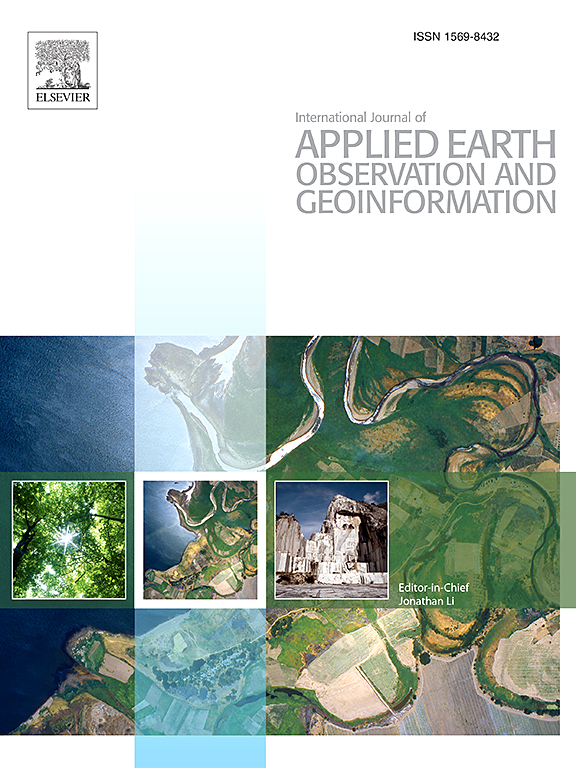Flexible style transfer from remote sensing images to maps
IF 7.6
Q1 REMOTE SENSING
International journal of applied earth observation and geoinformation : ITC journal
Pub Date : 2025-05-01
DOI:10.1016/j.jag.2025.104566
引用次数: 0
Abstract
Style transfer has emerged as a prominent technique for transferring stylistic elements between images (e.g., a reference image and a map). However, current methods face two challenges when applied to create image maps, especially when the reference image and map are not spatially aligned (e.g., covering different regions). These challenges include aligning the semantic elements between maps and remote sensing images, and then balancing the photorealistic textures with cartographic symbolism to maintain cartographic quality. To address these challenges, we propose a flexible style transfer method from remote sensing images to maps, relaxing the requirement of strict spatial alignment between remote sensing images and maps. Our approach enables the generation of image maps with adjustable stylistic results, offering a balance between photorealism and symbolization. First, we analyze the semantic of the input map and the reference imagery including semantic classes and semantic relationships encoded by colors. Then we implement hierarchical control and parameter interpolation to enable style matching. We also compare the transfer results of our method to those of the baseline image style transfer methods across four aspects including visual similarity, graphic discriminability, semantic consistency, and overall readability. The evaluations show that our approach significantly enhances cartographic quality by flexibly balancing photorealism and symbolization, while offering the flexibility to generate image maps with varying preferences.
从遥感图像到地图的灵活风格转换
风格转换已经成为一种在图像(如参考图像和地图)之间传递风格元素的重要技术。然而,目前的方法在创建图像地图时面临两个挑战,特别是当参考图像和地图在空间上不对齐时(例如,覆盖不同的区域)。这些挑战包括调整地图和遥感图像之间的语义元素,然后平衡逼真的纹理和地图符号,以保持地图质量。为了解决这些问题,我们提出了一种灵活的从遥感图像到地图的风格转换方法,放松了遥感图像与地图之间严格的空间对齐要求。我们的方法能够生成具有可调风格结果的图像映射,在照片写实主义和符号化之间提供平衡。首先,我们分析了输入图和参考图像的语义,包括由颜色编码的语义类和语义关系。然后,我们实现了层次控制和参数插值来实现样式匹配。我们还从视觉相似性、图形可分辨性、语义一致性和整体可读性四个方面比较了我们的方法与基线图像风格迁移方法的迁移结果。评估表明,我们的方法通过灵活地平衡照片真实感和符号化,显著提高了地图质量,同时提供了灵活地生成不同偏好的图像地图。
本文章由计算机程序翻译,如有差异,请以英文原文为准。
求助全文
约1分钟内获得全文
求助全文
来源期刊

International journal of applied earth observation and geoinformation : ITC journal
Global and Planetary Change, Management, Monitoring, Policy and Law, Earth-Surface Processes, Computers in Earth Sciences
CiteScore
12.00
自引率
0.00%
发文量
0
审稿时长
77 days
期刊介绍:
The International Journal of Applied Earth Observation and Geoinformation publishes original papers that utilize earth observation data for natural resource and environmental inventory and management. These data primarily originate from remote sensing platforms, including satellites and aircraft, supplemented by surface and subsurface measurements. Addressing natural resources such as forests, agricultural land, soils, and water, as well as environmental concerns like biodiversity, land degradation, and hazards, the journal explores conceptual and data-driven approaches. It covers geoinformation themes like capturing, databasing, visualization, interpretation, data quality, and spatial uncertainty.
 求助内容:
求助内容: 应助结果提醒方式:
应助结果提醒方式:


